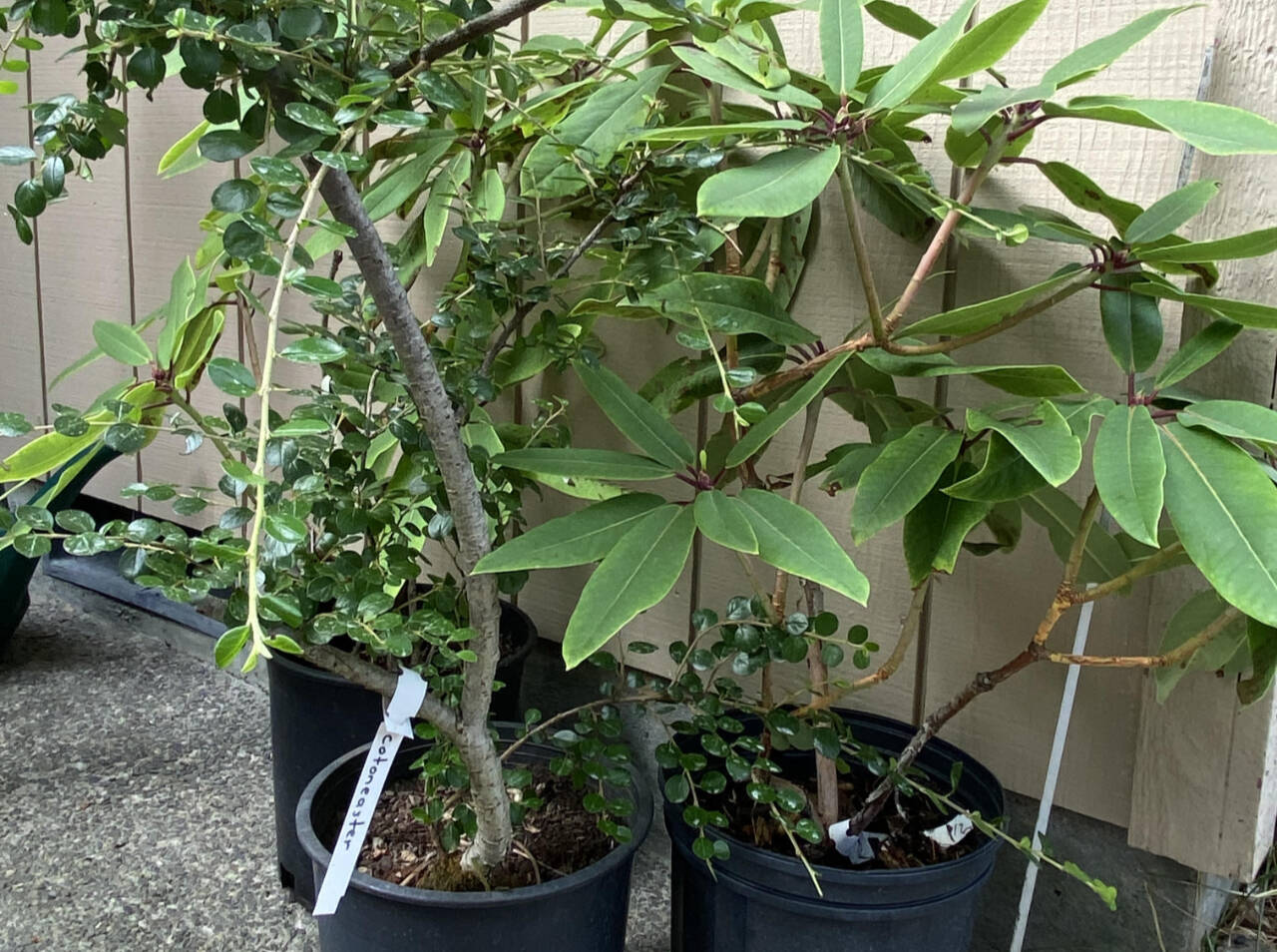The summer is starting to give way to the shorter days of fall. September brings cooler weather and eventually seasonal rains. Don’t be tricked by a little drizzle; continue to water until the rain returns in adequate quantity.
Fall also brings leaves which are an incredibly valuable and free resource; it’s a huge waste to bag them and put them in the trash. Rake deciduous tree leaves as they fall on the lawn and use them to mulch flowerbeds for the winter or add them to the compost. Leaves can also be mulched in place with mowing.
Annuals — Continue to enjoy your containers by replacing tired looking annuals with pansies, violas and annual chrysanthemums. In the Sequim area, ornamental kale, cabbage and other fall favorites will often last until going to seed in spring.
Bulbs, corms, rhizomes and tubers — Savor the last of your Dahlia blooms; the plants will keep blooming until the first hard frost. Now is the time to buy spring flowering bulbs, while the selection is best, to plant next month. Store them in a cool, dry place until planting.
Perennials — September is the month to start moving, dividing and adding plants to your landscape, but wait for a cool overcast day to ease the shock. It is best to plant at least a month before the expected date of the first hard frost. A general rule is to divide, or move, herbaceous perennials that bloom in the spring/early summer, in the fall. Wait until spring to divide fall bloomers.
Shrubs and trees — Shrubs and trees can be a big investment. Make sure to do a little research and choose ones that fit your space and meet your needs. A good reminder is to think about utility wires, roof lines, views and size when choosing a tree. Once planted, protect the investment and water them deeply until winter rains return. Plan to water all new plantings for at least a year regardless of any claim of drought resistance.
Hardwood plantings can be relocated but they are not nearly as forgiving as perennial plants. If needed, transplant deciduous shrubs after the leaves have fallen. Don’t apply fertilizer or perform any pruning to new or older plants; it is undesirable to stimulate new growth right before winter.
Berries — As the berry season ends, it’s time to clean up well around all the berry patches. Prune out second-year raspberry and blackberry canes when they have finished fruiting. Thin the strawberry patch, removing old or crowded plants. Apply compost/manure in fall, allowing it to breakdown before spring, and later add a layer of mulch for winter protection.
Fruit trees — There is a multitude of apple varieties, and all will have differing times to harvest; some early and many later. If the variety of apple is known, look up the suggested harvest time as a guide. To harvest apples, first determine desired ripeness. Start on the sunniest side of the tree where fruit matures first, lift the fruit and gently twist; it should release from the spur easily. Cut the apple and when the pips (seeds) are brown, the apple is ready.
Pears need to be harvested when they are full-sized and proper color, but before they become soft. Lift and twist in a similar method to apples, letting them ripen fully after being harvested. Like apples, knowing the variety is helpful; different varieties have unique signs of ripening.
Vegetables — As hard as it is, it’s time to top the tomatoes plants to encourage the fruit that has already set to ripen. Take heart, it’s not time to put everything in the vegetable garden to bed. It’s not too late to sow some cool weather crops such as arugula and winter lettuce. And it is the perfect time to prepare a new bed for planting garlic next month. Harvest winter squash and pumpkins (before the first hard frost) when their stems begin to shrivel and dry, and when the skin cannot be pierced with your fingernail. In the beds that are empty, sow a cover crop to improve the soil. Mulch the beds not containing winter or cover crops.
Houseplants — If houseplants have been moved outdoors for the summer, it’s time to bring them back inside. Check pots for pests and quarantine them to treat problems as needed.
Susan Kalmar is a Clallam County Master Gardener.
Controlling volunteer flowers
Deadheading flowers before they set seed will keep them looking good and blooming longer. If not deadheaded, many flowers, especially annuals such as poppies, cosmos and calendula, will aggressively plant themselves where they are not welcome. To keep self-sowing flowers under control, remove all but a few of their seed pods before they have a chance to mature and scatter.
When cutting back or removing plants, be careful not to unintentionally spread seed to other parts of the garden. If desired, collect seed on a dry day and save them in paper bags. Store seeds in a cool dry place until you are ready to plant them in a location of your choice.
September educational opportunities
Clallam County Master Gardeners have several interesting educational programs lined up in September.
Two Green Thumb Educational Series presentations will be offered in the Carver room at the Port Angeles Library, 2210 S. Peabody St., or by Zoom; both start at noon.
On Thursday, Sept. 14, it’s “Farewell to Summer: Autumn Leaves,” presented by Master Gardener Jeanette Stehr-Green. On Thursday, Sept. 28, Master Gardener and professional landscaper, Gordon Clark offers “Pruning Beyond the Basics.”
Digging Deeper Presentations are workshops held from 10:30 a.m.-noon at the Woodcock Demonstration Garden, 2711 Woodcock Road. On Saturday, Sept. 16: Master Gardener Margery Whites will present “Gardening for Newcomers to the North Olympic Peninsula.”
Dates and topics could change. For more detailed information, visit clallammgf.org.



